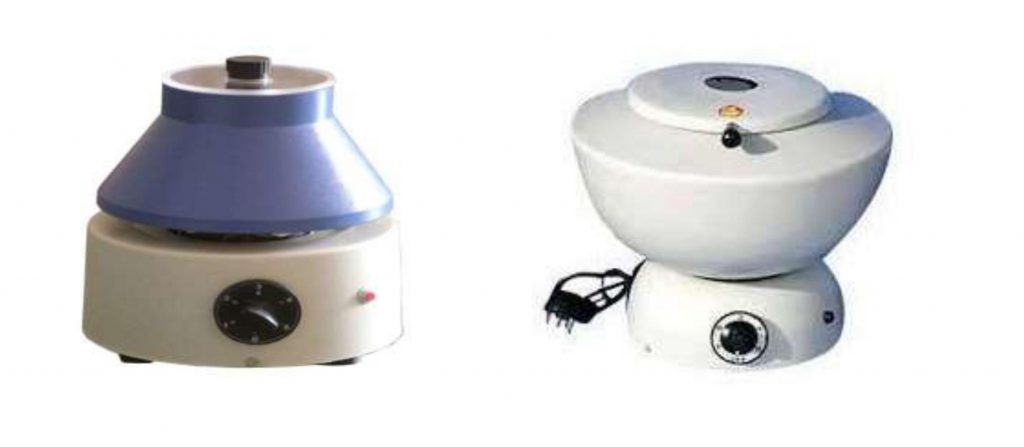
It is an apparatus that rotates at high speed and separates substances of different densities. Centrifuges are designed to accelerate the sedimentation process by using centrifugal force.
USE :
The centrifuge is used in a laboratory for various purposes such as:-
1. The separation of serum or plasma from red blood cells.
2. Separation of sediment in urine.
3. Separation of protein free filtrate.
4. Washing of red blood cells by normal saline.
5. Separation of antigen bound fraction of antibody bound fraction from free fraction in immunoassays.
COMPONENTS :
1. The centrifuge head (rotor) with tubes or cups with cushions (rubber pads) at the bottom inside the cups or tubes.
2. Motor drive assembly (A commutator type driving motor).
3. The chamber which encloses the above mentioned internal parts.
4. A power switch.
5. Speed control and the additional parts.
6. A timer.
7. A tachometer (to read RPM of the machine).
8. Graphite brushes.
PRINCIPLE :
The working of a centrifuge is based on the principle of centrifugal force, which acts on a substance in circular motion, towards the periphery.
The factor which govern the speed of centrifugation are:-
1. The revolutions per minute.
2. Length of radius: The radius is measured from the center of rotation to the inside bottom of the tube.
3. Shape and size of the particles.
4. Viscosity and specific gravity of the fluid under centrifugation.
5. Gravitational force acting on the particles.
CARE AND MAINTENANCE :
1. Place the centrifuge on a firm base. It should not be placed near a sensitive equipment such as photometer or spectrophotometer, because it generates electrical noise and high current drain, when started up. It should not be run near a combustible fluid.
2. Before the centrifugation, the centrifuge tubes and the cups or tubes of the centrifuge should be balanced properly. The load must be balanced both by equal mass and by centers of gravity across the center of rotation. Do not run the centrifuge with buckets or tubes (or cups) missing from the unit.
3. The chamber should be kept clean. All the spills should be cleaned immediately since it may contain bio-hazardous materials (chemical, microbiological or radioactive).
4. Always make sure that the cover is closed while the centrifuge is operating. Never open the chamber until the rotor has come to a complete stop.
5. Observe for usual normal vibration noise during operation. The centrifuge may vibrate excessively, if the tubes inside are not balanced properly. This should be checked immediately.
6. The rotor will not function if the graphite piece wears out completely. In that case, it is necessary to replace it with a new graphite brush. The glowing of the pilot lamp will indicate that electrical current is supplied normally to the machine.
7. Place a plastic cover on the centrifuge, when not in use.





